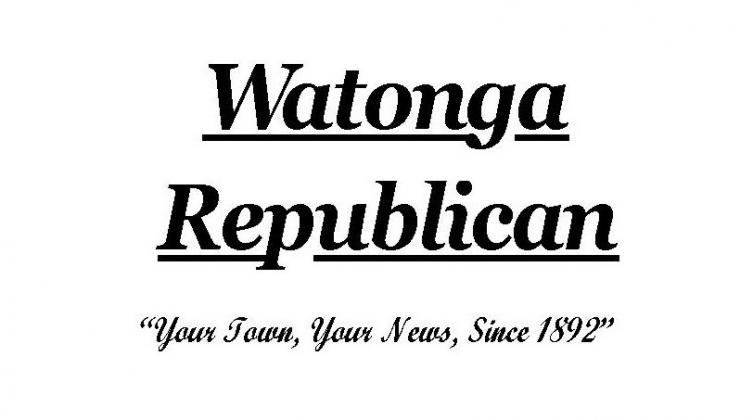We’ve had a busy week here at the museum. We had the third graders come on Tuesday for Frontier Days in celebration of the Cheyenne Arapaho land run of April 19, 1892. Watonga was 130 years old on Tuesday. The Watonga Republican editor Graham Dudley gave the students an interesting presentation concerning the process of producing the newspaper. Vicki Williams brought her spinning wheel and demonstrated how it was used. I wish I could have been at each station to hear the ladies interact with the students. I could tell by the look on the kids’ faces they were enjoying each station. One boy told me that making the butter was the best and he was going to do that from now on. Some thought washing clothes on a scrub board was too much work. I bet the ones doing it back then thought that too. Watonga middle school student council students came to help. They were very good at organizing and playing games with the third graders.
On Wednesday a reporter from Oklahoma Today magazine came to do an interview and take pictures. She is writing about historic homes in Oklahoma and chose the T.B. Ferguson Home as one to write about. The article should be in the July/August edition.
Saturday was the Scrape Fest as Clay labeled it. The volunteers met at 10:00 am to do as much as they could on the north and then moved to the south side of the home.
Then Saturday afternoon three ladies from Blanchard came for a tour and ended up catching a bird and releasing it back outside. It most likely entered while the door was open that morning. Ashley said they were good natured about it.
Thanks to all the Watonga citizens that have helped us this week, the ladies, middle school students with the third graders, Noble House Bed and Breakfast for donating the cookies, the anonymous donor for the money to purchase the Sarsaparilla, and the City of Watonga for the treats, and the volunteers scrapping.
Continuing on with the newspaper article from last week. Sometimes the stage coach brought new faces to the community as the tired, dusty passengers stepped down from the coach. The Manager for the Southwest Stagecoach Company was Henry Todd. His son operated a store in Calumet after the demise of the stage line due to a phasing out of Army forts no longer needed after the opening of the Cheyenne-Arapaho country to settlement. The railroad soon provided the mail and passengers. According to Beneda the stage company headquarters was in Caldwell, Kansas, with the main office in Independence, Missouri. The stage coach ran north and south through Round Pond Station (Pond Creek), Skeleton Creek (Enid), buffalo springs (Bison), Bullfoot Station (Hennessey), the Indian agency at Darlington, Ft. Reno, Anadarko Indian agency, Ft. Sill, and terminated at Henryetta, Texas. The east-west route bisected the main route at Ft. Reno, and served passengers and mail service east to Ft. Smith and west to Darlington, via a way station located west of the present town of Watonga, Cantonment Indian Agency, Ft. Supply, the Texas panhandle location of Ft. Elliott, and the cowtown of Mobeetie, Texas, where buffalo hunters also headquartered. One of the old Watonga way stations, one of the few remaining links to the old Southwest Stagecoach, is located in the backyard of the T. B. Ferguson home Museum. It was originally built on or near the trail from Darlington to Cantonment on a junction with a cutoff trail from Bullfoot station near Hennessey. It ran southwest through present Blaine County, crossing Cooper Creek just east of Bucher, where evidence has been found of a dugout used mostly by government freighters as a rest stop. It would be nice to know what paper and date this article was printed in. Whoever had underlined several sentences, showing that information was important to them? More to follow.

